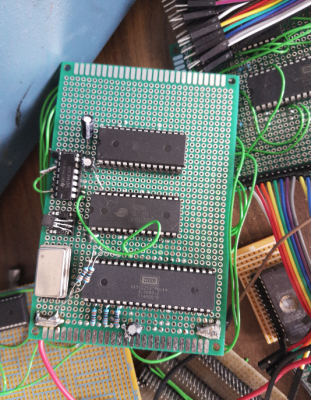it's really not that critical, this thing is one big mess of wires (the front kinda gives an impression of the back, which has piles of telephone patching wires 5cm high sticking out of it

and has successfully been running it's memory test and rom checksums at 2 and 4mhz for over a week with zero errors (8mhz also still seems to work but the at28c256-15 isn't specified up to that speed it seems). both with an nmos 6502B (driving cmos inputs at that) and a 65C02. the issues are more with the radio interference that comes -out- of it

(it does seem to do a pretty nice job at transmitting am broadcast radio while it's at it

pretty much all those old commodore boards also just spell 'big antenna' all over them, no bus termination, no nothing, buses a mile long.
Attachment:
 6502.png [ 786.53 KiB | Viewed 5984 times ]
6502.png [ 786.53 KiB | Viewed 5984 times ]
a bit of flatcable is nothing to worry about. unless it's more than a meter in total or so. IDE isn't terminated and runs at 33mhz-ish, scsi is terminated, but will happily run on flatcables up to 3 meters long. as the test board shows you can take the crappyness of your design a looong way before it starts to affect performance.







